Avoiding Common 401(k) Mistakes
Saving for retirement is, without question, a journey. And, like any journey, even the slightest wayward turn can send you off course, making it more challenging to reach your destination. Learn about 5 common 401(k) mistakes people make with their retirement accounts.
Presented by: Gerard Longo, AIFA®, CPFA®
Here are 5 Common 401(k) Mistakes
Below are five common 401(k) mistakes every retirement investor should avoid, along with suggestions for course correction.
1. LEAVING FREE MONEY ON THE TABLE
Most employers help employees save for retirement through employer-sponsored plans by matching a portion of the money workers contribute from their paychecks. Are you taking full advantage of this benefit? If not, you’re missing out on free retirement funds! Fortunately, this mistake is an easy one to fix—simply bump your contribution percentage up to at least the maximum contribution match your employer offers. For example, if your company will match up to 50 percent of the first 6 percent you defer out of your paycheck (a common retirement plan match formula), you should set your minimum contribution rate at 6 percent. If you defer less, you could be making one of the 5 expensive 401(k) mistakes. Matching formulas and eligibility requirements vary by company, so contact your Human Resources department to find out what your employer offers.
2. KEEPING SAVINGS RATES STATIC
Choosing to contribute to a 401(k) plan or Roth is a monumental achievement because it kick-starts your retirement savings journey. But enrolling in your company’s retirement plan is merely the first in a series of actions you should take to make your financial future more secure. Incrementally increasing the percentage of your paycheck that you put away for retirement is an important step toward continuing your savings momentum. Let’s look at an example:¹ Julia, age 35, earns $50,000 annually. She enrolled in her company’s retirement plan and is deferring 2 percent of her paycheck. If Julia continues to defer 2 percent of her salary until she retires at age 67, her savings would be $100,810—not bad, Julia! But what if she increased her contribution rate by 1 percent each year until her rate was 15 percent? If she did, her account value would be $562,242—an improvement of $461,432! But let’s not stop there. If Julia took advantage of a company match, as described above, her account value would be $701,886—$601,076 more than if Julia’s saving rate had remained static.²
So, consider gradually increasing your contribution to your retirement plan. Or, even better, see if your retirement plan offers a feature that automatically bumps your contribution rate by 1 percent annually if you provide a one-time authorization. As evidenced by Julia’s example, small changes really do make a big difference.
3. NOT BEING PREPARED TO PLUG THE SAVINGS LEAK
Retirement plans are designed to be long-term savings vehicles. Taking out loans or premature withdrawals while you’re still working or cashing out when you change employers—known as retirement plan leakage—can cripple long-term savings goals and deplete the account balances you worked so hard to build. Why is this one of the 5 common 401(k) mistakes? Those transactions can trigger costly taxable events and, in some cases, early withdrawal penalties—not to mention put you behind the eight ball as you try to replenish your lost retirement savings.
But let’s face it: life is full of surprises, and quick cash to pay for an unexpected expense is sometimes a necessity. To prepare for life’s curveballs, think about opening an emergency fund (i.e., money set aside for when you’re in a financial jam). Having easy access to funds dedicated to helping you through tough financial times will alleviate the need to dip into your retirement savings.
4. OFF-THE-CUFF INVESTING
For many people, investing can feel intimidating. Often, do-it-yourself investors select an asset allocation mix that doesn’t align with their financial goals or investment objectives. Further, inexperienced investors may find it difficult to separate the emotional aspects of investing from the calculated, dispassionate decision-making successful investing often requires.
Fortunately, options are available for those who don’t feel comfortable choosing their own investments. Target-date funds (TDFs),3 available to most 401(k) plan investors, are professionally managed mutual funds that automatically allocate the appropriate mix of stocks, bonds, and fixed-income products based on the date an investor expects to retire. In short, TDFs take the guesswork out of the equation for novice and seasoned investors alike. Another option is to enlist the help of a financial advisor, either on your own or through your company’s 401(k) plan. Regardless of your investment aptitude, working with a trained investment professional will allow you to put their investment acumen, experience, and specialized expertise to work for you.
5. ABANDONING A LONG-TERM PERSPECTIVE
Fluctuations in your 401(k) plan or workplace retirement savings account can stir up negative emotions and make you want to hit the panic button. But in turbulent times—like when world events wreak havoc on financial markets—it’s more important than ever to remain calm and stay on course toward your retirement savings goals.
A long-term perspective and diversified portfolio remain the best ways to take advantage of investment opportunities and hedge against risks, but staying the course is sometimes easier said than done. To ensure that your retirement portfolio is positioned to benefit from future market upswings, resist the urge to sell out of your long-term investments. Even if your 401(k) loses value over short periods of time, it pays to stick to your plan. Allowing emotions to drive your decisions could mean missing out on potential gains when the market stabilizes.
¹ This is a hypothetical example and is for illustrative purposes only. No specific investments were used in this example. Actual results will vary. Past performance does not guarantee future results. 2 Source: www.dinkytown.net. The following assumptions were used to make these calculations: Julia’s age when she begins contributing: 35; age at retirement: 67; annual salary: $50,000; beginning account balance: $0; annual expected salary increase: 2 percent; annual rate of return: 5 percent; employer match: 50 percent up to 6 percent of salary deferred. 3 Investments in target date or target retirement funds are subject to the risks of their underlying holdings. The year in the fund name refers to the approximate year (the target date) when an investor in the fund would retire and leave the workforce. The fund will gradually shift its emphasis from more aggressive investments to more conservative investments based on its respective target date. The performance of an investment in a target date or target retirement fund is not guaranteed at any time, including on or after the target date, and investors may incur a loss. Target date and target retirement funds are based on an estimated retirement age of approximately 65. Investors who choose to retire earlier or later than the target date may wish to consider a fund with an asset allocation more appropriate to their time horizon and risk tolerance.
Gerard Longo is a financial advisor located at Global Wealth Advisors 2400 Ansys Drive, Suite 102, Canonsburg, PA 15317. He offers advisory services through Commonwealth Financial Network®, Member FINRA / SIPC, a Registered Investment Adviser. Financial planning services offered through Global Wealth Advisors, LLC are separate and unrelated to Commonwealth. He can be reached at (412) 914-8292 or at info@gwadvisors.net.
© 2025 Commonwealth Financial Network®
Latest News
How much does college really cost?
April 2, 2025
How Much Does Your Bracket Pick Really Cost? We hope you're just as excited as we were for this year’s March Madness Tournament and finally getting down to F...
READ MORE...Big News for Retirees: Social Security Fairness Act Repeals WEP and GPO
March 27, 2025
If you or your spouse have worked in both the public and private sectors—or if you’re currently drawing a government pension—there’s important news that...
READ MORE...Managing Taxes on Your Investments
February 19, 2025
Presented by Scott Portlock CFP®, CLU® When it comes to your money, it’s not what you earn, it’s what you keep. Here are some ideas that may help le...
READ MORE...Loading...






